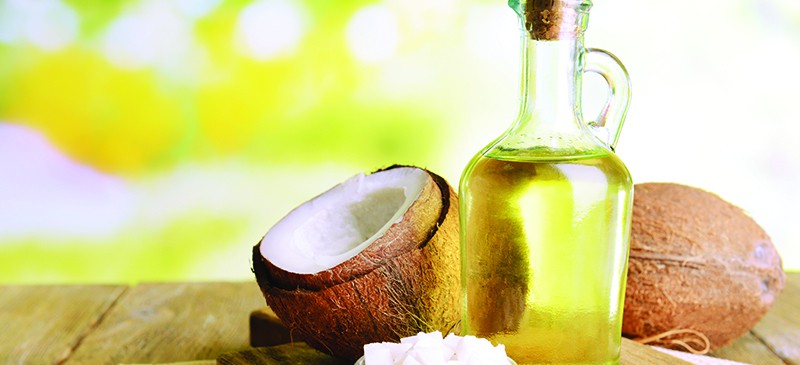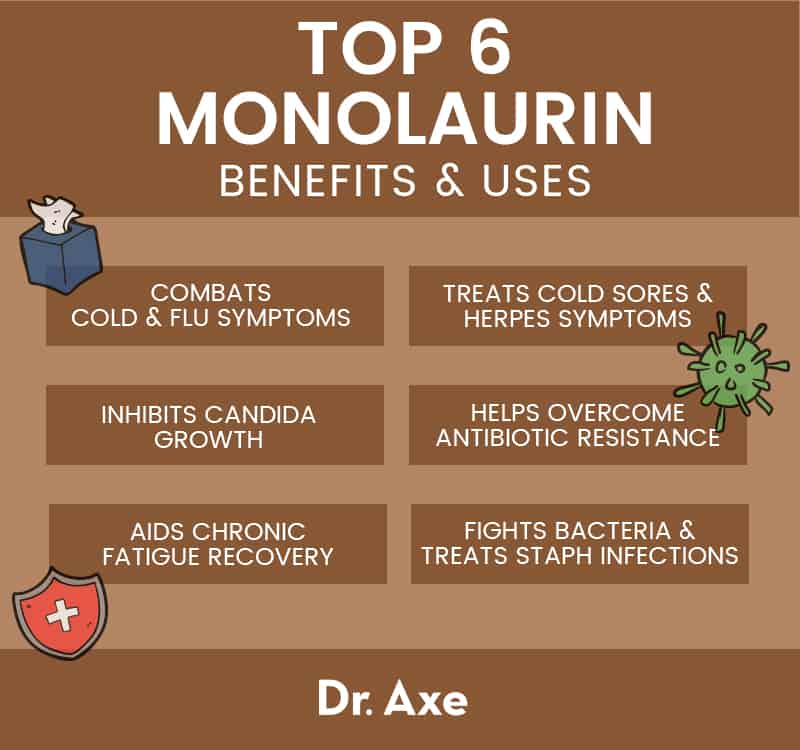This Dr. Axe content is medically reviewed or fact checked to ensure factually accurate information.
With strict editorial sourcing guidelines, we only link to academic research institutions, reputable media sites and, when research is available, medically peer-reviewed studies. Note that the numbers in parentheses (1, 2, etc.) are clickable links to these studies.
The information in our articles is NOT intended to replace a one-on-one relationship with a qualified health care professional and is not intended as medical advice.
This article is based on scientific evidence, written by experts and fact checked by our trained editorial staff. Note that the numbers in parentheses (1, 2, etc.) are clickable links to medically peer-reviewed studies.
Our team includes licensed nutritionists and dietitians, certified health education specialists, as well as certified strength and conditioning specialists, personal trainers and corrective exercise specialists. Our team aims to be not only thorough with its research, but also objective and unbiased.
The information in our articles is NOT intended to replace a one-on-one relationship with a qualified health care professional and is not intended as medical advice.
Monolaurin: The Most Beneficial Compound in Coconut Oil?
January 4, 2019

Do you know one of the main reasons why coconut oil has so many impressive uses and benefits? It’s thanks to a key component called monolaurin. This is also one of the reasons why breast milk offers so many immune-boosting benefits to babies.
Is monolaurin an antiviral? Yes. That’s why it’s used to prevent as well as treat viral health concerns, including herpes, shingles, the common cold and the flu. Overall, it’s known to be an excellent booster to the immune system, and it can be found in some foods you may already enjoy on a regular basis.
What Is Monolaurin?
Monolaurin is an organic compound made from lauric acid. Its chemical formula is C15H30O4. Other names for it include glycerol monolaurate, glyceryl laurate or 1-lauroyl-glycerol.
In nature, lauric acid is a precursor to monolaurin, which is an even more powerful antimicrobial agent than lauric acid. When your body digests lauric acid, certain enzymes within the digestive tract form this beneficial monoglyceride known as monolaurin.
Is monolaurin a coconut oil? No, but it is found in coconut oil as well as breast milk. As a 2016 scientific article points out:
Coconut oil is made up of about 90 percent saturated fats and 9 percent unsaturated fats. However, the saturated fats in it differ from saturated fats in animal fats. Over 50 percent of the fats in coconut oil are medium chain fatty acids, such as lauric acid (12:0). Coconut oil is the highest natural source of lauric acid. Lauric acid and its derivative monolaurin constitute around 50 percent of coconut fat-derived lipid.
Benefits and Uses
What are the benefits of monolaurin? Monolaurin benefits may offer help for many common health concerns, including:
1. Cold and Flu
According to a scientific article, titled “A Review of Monolaurin and Lauric Acid: Natural Virucidal and Bactericidal Agents,” the ability of monolaurin to kill viruses has been reported since 1966. In general, it is a potent antimicrobial. This means it is a substance that kills microorganisms or stops their growth.
A research paper published in 2011 in the journal Evidence-based Complementary and Alternative Medicine highlights monolaurin as a potential complementary and alternative medicine for the H1N1 flu (swine flu). In general, viruses like the flu are challenging to treat and contain because they spread and mutate extremely quickly. This paper points out the specific reason why monolaurin can be so helpful to so many virus-based health problems, including colds and flus. It actually can make the fatty envelope of a pathogenic organism like a virus soluble, thereby disintegrating its outer membrane and ultimately killing off the virus and preventing replication.
The reason why you often see coconut oil recommended in natural flu and cold remedies is due to its lauric acid and monolaurin content. Viruses cause colds so the antiviral effects may be able to help you prevent and recover better from a cold. Whether you have a sore throat due to a cold or the flu, you can skip those sugary, often artificially flavored and colored store-bought lozenges and swallow a half to one teaspoon of coconut oil up to three times daily to ease a sore throat or cough and promote healing.
Monolaurin is said to inactivate other viruses to some degree as well, including herpes simplex-1, HIV, measles, vesicular stomatitis, visna virus and cytomegalovirus.
2. Herpes
For the virus-killing reasons described above, monolaurin is often used to treat cold sores that are caused by a strain of the the herpes simplex virus.
An easy monolaurin herpes remedy is to apply coconut oil to the area(s) of concern. If you experience cold sores, try applying coconut oil several times per day to reduce healing time and pain. Not only can the coconut oil help kill off the virus causing the cold sore, but it also offers moisture that promotes better healing. This means developing scars or discoloration left in the area of the sore is less likely.
For genital herpes, the Weston A. Price Foundation recommends taking a monolaurin supplement. It points out that one dose of a standardized supplement, such as lauricidin, is equal to taking many tablespoons of coconut oil per day, and the results can be very impressive for suppressing herpes outbreaks as well as fighting off candida infections.
It is a safe extract, which can be taken long term. The usual dose to suppress the herpes is about 1/2 to 1 scoop, one to three times per day. It should be swallowed, not chewed, and always taken with some food. The dose should be increased slowly as tolerated and as gauged by its effectiveness.
3. Candida
A study published in 2016 took a look at the antifungal effects of monolaurin (also known as glycerol monolaurate) on candida albicans biofilms. People with candida symptoms can have overgrowth of this fungal pathogen in their guts, mouths, genito-urinary tracts and/0r skin. This in vitro study demonstrated how glycerol monolaurate can inhibit fungal growth of C. albicans.
4. Antibiotic Resistance
As antibiotic resistance continues to pose a severe health threat around the entire globe, we need natural alternatives to antibiotics more and more. The awesome thing is that monolaurin and lauric acid derived from coconut oil demonstrate the ability to inactivate pathogenic bacteria while not affecting beneficial probiotics.
An in vitro study published in the Journal of Drugs in Dermatology tested glycerol monolaurate along with six common antibiotics (penicillin, oxacillin, fusidic acid, mupirocin, erythromycin and vancomycin) against several organisms known to cause skin infections. Overall, the researchers conclude that glycerol monolaurate has “statistically significant in vitro broad-spectrum sensitivity against Gram-positive and Gram-negative bacterial isolates from superficial skin infections.” Additionally, most of the bacteria did not exhibit resistance to it.
5. Chronic Fatigue
Chronic fatigue syndrome is a chronic illness that’s main symptom is extreme fatigue that lasts for over six months. Without treatment, chronic fatigue syndrome may decrease memory, concentration and stamina. Some experts believe that certain viruses can trigger the syndrome, such as the Epstein-Barr virus, human herpes virus 6 and mouse leukemia viruses. Given its ability to attack a broad range of viruses, monolaurin has been helpful in some cases of chronic fatigue syndrome.
6. Staph Bacteria
Is monolaurin antibacterial? Yes, in addition to being antiviral, it’s also antibacterial. It has demonstrated its ability to kill infection causing bacteria like Staphylococcus aureus, which causes staph infections. Numerous in vitro and in vivo studies point toward glycerol monolaurate’s ability to act as both a preventative and therapeutic agent to fight staph infections. In its pure form, it has been shown to fight staph bacteria while coconut oils alone are not as effective.
Due to its antibacterial abilities, the food industry sometimes uses monolaurin as a preservative. Research shows that glycerol monolaurate can also inhibit the activity of other harmful varieties of bacteria, like E. coli. (15)

Food Sources
You can obtain some monolaurin benefits by consuming certain foods, such as coconut products.
Monolaurin is an organic compound made from lauric acid and can be found in :
- Human breast milk
- Coconut oil, which is the second best source after breast milk
- Coconut milk
- Coconut cream
- Coconut meat
- Cow and goat milk (both have small amounts with goat milk containing more lauric acid than cow’s milk)
Supplements and Dosage
What is monolaurin supplement used for? If you read monolaurin reviews, you can see that people also use it for various health concerns, including genital herpes. Are there monolaurin weight loss benefits? Studies show that long-term consumption of MCTs (like those found in coconut oil) can boost weight loss efforts. However, there are no clinical studies specifically involving glycerol monolaurate intake and weight loss benefits to date.
Lauricidin is a supplement that mixes coconut oil’s lauric acid with a plant-based glycerol to create a purified ester of monolaurin. You can also find monolaurin as part of multi-ingredient antiviral supplements.
Currently, there are no standard dosing recommendation for this supplement. Always follow monolaurin dosage recommendations on product packaging carefully. Typically, recommendations encourage starting with a smaller dosage and gradually increasing over time.
Talk to your health care provider if you feel unsure about the right dosage fro you.
How to Obtain Monolaurin (Plus Recipes)
If you’re wondering where to buy monolaurin, you can find supplements in health stores or online.
You can also purchase coconut products that contain lauric acid, which your body then converts into monolaurin. Here are some healthy and delicious recipes that include coconut-based ingredients:
- Thai Coconut Chicken Soup Recipe (with coconut milk)
- Coconut Milk Kefir
- Moringa Tea Latte Recipe (with coconut oil)
Interesting Facts
Lauric acid was first discovered by microbiologists when they were studying the breast milk of humans to figure out what antiviral substances it contains that provide infants protection from microbial infections.
Other than health concerns, what is monolaurin used for? The producers of some food products, including margarine, ice cream and pasta, use it — as do some detergent and cosmetic manufacturers.
The “original proponent” and discoverer of monolaurin, Dr. Jon J. Kabara conducted many of the initial studies in the 1960s and 1970s that reveal this organic compound’s potent antimicrobial ability.
Risks and Side Effects
Speak with your health care provider before taking supplements containing this compound if you are pregnant, breastfeeding, have a medical condition or currently take any medication.
Final Thoughts
- What is monolaurin? It is a chemical that comes from lauric acid. It can naturally be found in breast milk, coconut oil and other coconut products. Cow and goat milk also contain small amounts with goat milk a richer source than cow milk.
- Its impressive health-promoting properties were first discovered in the 1960s by Dr. Jon J. Kabara.
- Potential monolaurin benefits stem from its immune-boosting, antiviral, antibacterial and antifungal properties. These benefits include prevention and treatment of health problems with viral roots, including the common cold, the flu, herpes, chronic fatigue syndrome as well as bacterial infections, such as staph infection and fungal infections.
- It is available as a supplement online and in health stores. It’s also used in the production of food and cosmetics because of its antibacterial properties.
- More clinical studies with human subjects should occur in the future to reveal more of this organic compound’s potential as an alternative treatment option for many common and serious health problems.













